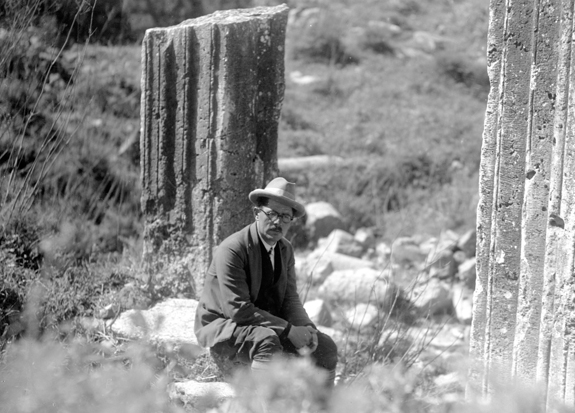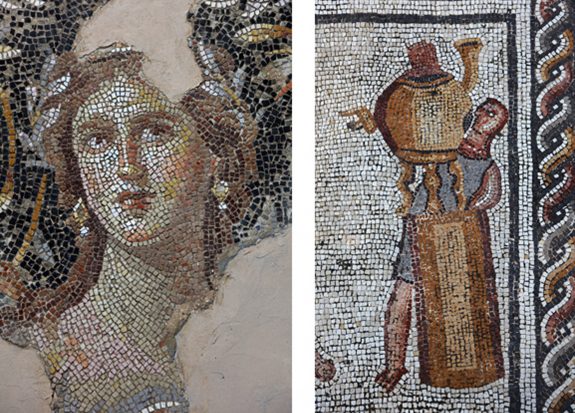|
|
Join us this spring for the Leon Levy Foundation Lectures in Jewish Material Culture. Zeev Weiss will deliver three lectures in a series entitled “Jewish Material Culture: Old Theories and New Approaches, from Eleazar L. Sukenik to the Twenty-First Century.”
Additional support provided by The David Berg Foundation.
|
|
|

|
|
|
|
Lecture 1
Eleazar L. Sukenik: The Establishment of the Field of Jewish Archaeology at the Hebrew University of Jerusalem, 1926–1953
Eleazar L. Sukenik, who immigrated to Palestine from Bialystok, Poland, laid the foundations for archaeological research in the early days of the Hebrew University of Jerusalem, prior to the establishment of the State of Israel. Sukenik’s archaeological interests were broad, but he focused mainly on Jewish archaeology in the Second Temple period and late antiquity, and devoted his career to the study of ancient synagogues, Jewish cemeteries, epigraphy, numismatics, and the Dead Sea scrolls. His major excavations, contributions, and achievements in Jewish archaeology are the backdrop for the first lecture, which will focus on definitions and content. It will examine the principal finds that defined Jewish material culture in Sukenik’s lifetime as well as his motives and mission to fill the prevailing vacuum in the archaeological research of the Land of Israel. A retrospective of the development of his academic career and public role will be presented in light of the emergence of Jewish archaeology as an academic discipline following his pioneering initiative.
Tuesday, February 19, 6–7:30 pm
38 West 86th Street, Lecture Hall
|

 BGCTV This event will be livestreamed. A link to the video will be posted to the event listing the day of the talk. BGCTV This event will be livestreamed. A link to the video will be posted to the event listing the day of the talk. |

|
Lecture 2
Jewish Material Culture: Old Theories and New Horizons in Current Research
During the final decades of the twentieth century, archaeological research yielded abundant information on Jewish life in ancient Palestine. These finds contribute significantly to the fields in which Sukenik was engaged and continue to expand the scope of the cultural markers for Jewish ethnic and religious identity. Socio-cultural markers for Jewish presence have been found at many sites in both the private and public spheres and are evident not only in the major towns and cities of ancient Palestine—in the heart of the Jewish community and in rabbinic circles, where some of the literary works known today were composed—but also at remote sites and in marginal areas. The second lecture will present the major innovations in the study of Jewish material culture in current research and will explore the methodological approaches and common perceptions used in reconstructing Jewish life in Roman and late antique Palestine.
Tuesday, February 26, 6–7:30 pm
38 West 86th Street, Lecture Hall
|

 BGCTV This event will be livestreamed. A link to the video will be posted to the event listing the day of the talk. BGCTV This event will be livestreamed. A link to the video will be posted to the event listing the day of the talk. |

|
Lecture 3
Expanding the Limits: The Study of Jewish Material Culture in the Twenty-First Century
Associating archaeological finds with the Jewish sphere has often been linked to the existence of certain socio-cultural and religious markers denoting Jewish usage. A single symbol or fragmentary inscription appearing on a small object, a sarcophagus, or a mosaic floor decorated with mythological themes can at times confirm Jewish usage. However, would it be possible to associate Graeco-Roman finds such as the monumental buildings or colorful mosaics uncovered in Tiberias and Sepphoris, cities populated mostly by Jews, with Jewish usage even if they were devoid of any indicative signs? What do these finds tell us about Jewish life in antiquity? Interpretation in such cases depends on how the archaeological finds are perceived in the eyes of the beholder, who questions the limits, shifting borders, and extent to which the Jewish communities were willing to adopt foreign influences and assimilate them into their lives. The third lecture will focus on Jewish populations living in multicultural environments in antiquity and will proffer a new approach to the study of Jewish archaeology and its borders in the twenty-first century. It will present an array of finds associated with the prevalent Graeco-Roman lifestyle and culture, and will claim that such expressions should not be ignored when attempting to contextualize Jewish life in ancient Palestine.
Tuesday, March 5, 6–7:30 pm
38 West 86th Street, Lecture Hall
|

 BGCTV This event will be livestreamed. A link to the video will be posted to the event listing the day of the talk. BGCTV This event will be livestreamed. A link to the video will be posted to the event listing the day of the talk. |
|
COPY AND PASTE CODE BELOW TO MAILCHIMP
|